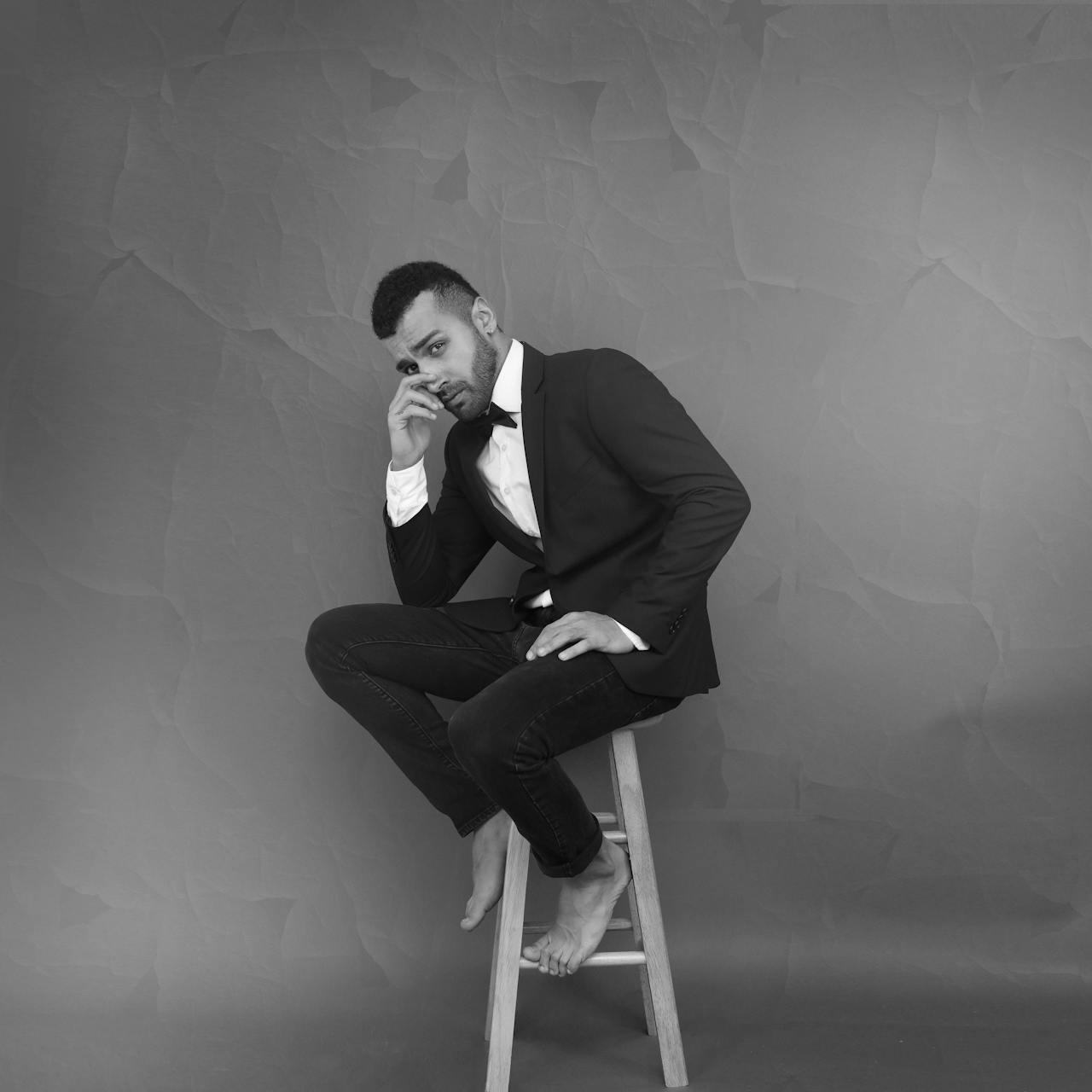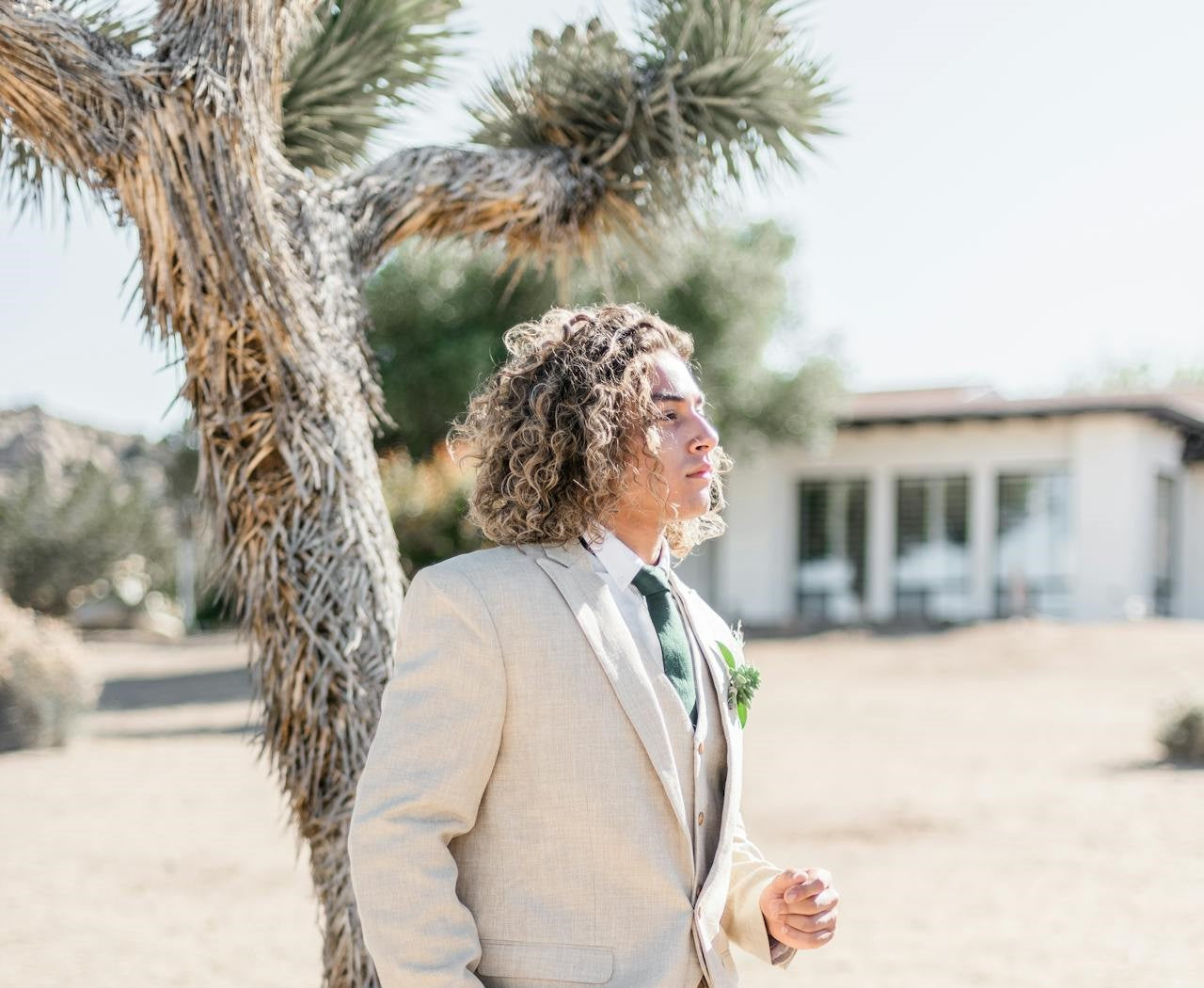In men's fashion, the distinction between a tuxedo and a suit is both significant and subtle, serving different purposes and conveying varying levels of formality. Whether you're preparing for a wedding, a formal event, or just aiming to elevate your wardrobe, understanding these differences is crucial. In this article, we'll explore the history of men's formal attire, then break down the differences between tuxedos and suits, and help you decide which option is best for your next big event.
A Brief History of Tuxedos vs. Suits
The history of tuxedos and suits is a fascinating journey through time, reflecting the evolution of men's formal wear. The suit, tracing its origins to the 17th century, evolved from the elaborate court dresses of Europe into a more streamlined and practical attire by the 19th century, symbolizing professionalism and sobriety. The modern lounge suit emerged as a versatile ensemble suitable for both business and casual occasions, with its components—jacket, trousers, and sometimes a waistcoat—crafted from matching fabric.
The tuxedo, on the other hand, made its debut in the early twentieth century in Tuxedo Park, New York, where it was adopted by American high society as a less formal alternative to the tailcoat for evening wear. According to the Metropolitan Museum of Art, While serving as Prince of Wales, Edward VII favored the unconventional tuxedo and greatly contributed to its popularity across Western Europe. Over time, thanks to its satin or grosgrain lapels and a preference for black or midnight blue, the tuxedo became synonymous with elegance and sophistication, reserved for the most formal of events.
Over the years, both tuxedos and suits have undergone various stylistic changes, influenced by cultural shifts, fashion trends, and the demands of contemporary life. However, their core elements remain, standing as timeless symbols of men's fashion, each catering to different levels of formality and occasion.
When Formality is Key
The primary difference between a tuxedo and a suit lies in their formality levels. Tuxedos are the gold standard for formal attire, traditionally worn for evening events and black-tie affairs. Suits, on the other hand, are versatile; they can be dressed up or down depending on the occasion, making them a staple for everyday wear as well as special events like weddings.
There's also a middle-ground between regular suits and tuxedos: the double-breasted suit. Double-breasted suits ride the line of formality. Managing to be considered right for more formal events than a regular suit. Read up on the double breasted suit vs regular suits in our guide.
It's All In the Details When Deciding Between Suits and Tux's
When it comes to men's formal wear, the devil is truly in the details. A discerning eye can spot the nuanced differences between a tuxedo and a suit, which are not just about when and where they are worn but also about how they are constructed and styled. When distinguishing between a tuxedo and a suit, pay specific attention to the lapels, buttons, and additional accessories.
- Lapels: Tuxedo lapels are traditionally made with satin or grosgrain, offering a shiny contrast to the matte fabric of the rest of the garment. Suits typically have lapels made from the same fabric as the suit itself.
- Buttons: Tuxedo buttons are often covered in fabric (usually the same type as the lapels), while suit buttons are generally made of plastic or horn.
- Accessories: With tuxedos, cummerbunds, or waistcoats paired with a bow tie are common. Suits are more flexible in terms of accessories and can be worn with long ties or bow ties, with or without a vest.
Sometimes, when considering a tuxedo or a suit, you may find that tuxedos are overly formal and you will feel out of place and overdressed. So, let's consider when it's right to wear a tuxedo vs when its right to wear a suit.
When to Wear a Suit vs. When to Wear a Tuxedo
Choosing between a tuxedo vs a suit hinges on several key considerations. First and foremost, always pay close attention to the event invitation for any mention of a dress code; if it specifies black tie or formal, a tuxedo is your go-to option, while for semi-formal or casual events, a suit will be more appropriate.
The time of day also plays a crucial role in this decision-making process, as tuxedos are traditionally reserved for evening events, reflecting their higher level of formality, whereas suits offer the flexibility to be worn at any time of day, making them a versatile choice for various occasions.
Additionally, the venue of the event can significantly influence your attire choice; opulent settings such as a grand ballroom or a luxury hotel typically necessitate the elegance of a tuxedo, while suits are deemed acceptable for most other venues, offering a smart yet less formal option.
When to Wear a Suit vs Tux
- Business Events: For most professional settings, meetings, or conferences, a well-tailored suit is the appropriate choice. It exudes professionalism and sophistication without being overly formal.
- Casual Weddings: A suit is your go-to if the wedding invitation specifies a semi-formal or casual dress code. Opt for lighter colors or fabrics for daytime or summer events and darker shades for evening or winter weddings. Due to the flexibility in the dress code, wedding suits pair well with a broader range of accessories like belts, ties, and pocket squares.
- Dinners & Social Gatherings: For most dinners, parties, or social gatherings that don't specify a black-tie dress code, a suit will serve you well. It's versatile enough to be dressed up or down, depending on the occasion.
- Job Interviews: A strong first impression is crucial, and a suit is often the safest choice. It shows respect for the occasion and demonstrates your professionalism.

When to Wear a Tuxedo Over a Suit
- Black-Tie Events: This is the realm of the tuxedo. Galas, formal weddings, and evening social events often require a black-tie dress code, where a tuxedo is not just recommended, it's expected.
- Opera, Ballet, or Symphony: A tuxedo is the perfect choice if you're attending a high-culture event, especially in the evening. It aligns with the elegance and formality of the setting.
- Formal Award Ceremonies: Red carpet events or formal award ceremonies are prime occasions for tuxedos. They reflect the significance and grandeur of the event.
- Formal Weddings: For weddings that specify a black-tie dress code, especially those taking place in the evening or at a formal venue, a tuxedo is the appropriate attire.
Performance Men's Suits by xSuit: Where Style Meets Functionality
At xSuit, we understand the importance of looking your best on your wedding day or any significant formal event. Our range of performance men's suits, shirts, and accessories combines style, comfort, and functionality, ensuring you don't just look great but also feel comfortable during your event. Click here to explore our extensive catalog of casual and formal attire.


